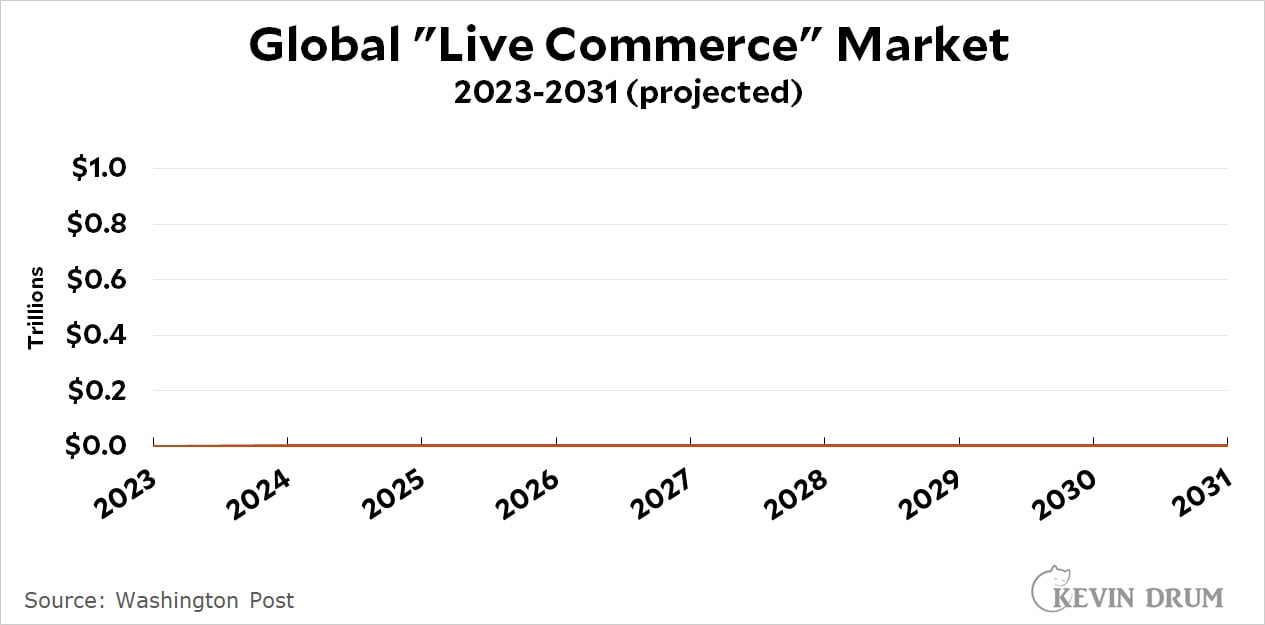Annie Lowrey comments on the economic problems of the working class:
The COVID-era boosts to SNAP, UI, CTC, and child care went away. Medicaid unwound. Food costs spiraled. Interest rates doubled. Measures of material hardship worsened. And Democrats pointed to headline figures showing a boom.
I know I'm beating a dead horse, but I continue to have problems with this narrative. SNAP benefits went way up and were permanent. Expanded UI went away, but that's because everyone went back to work. Food costs went up, but not by more than wages and not at all for the past year. That leaves interest rates, which did indeed rise, and CTC and Medicaid benefits, which did indeed unwind.
That said, if any of these things were serious they really would show up as worsening measures of material hardship. But which ones? Lowrey is right that headline averages can be deceiving, so let's look solely at measures of the poor and working class. Here are expenditures:
 This is not the BEA measure of spending, which includes stuff like imputed rent and healthcare paid by insurance. It's the one from the Consumer Expenditure Survey, which measures money out the door. As you can see, every income level did about the same, with the working class doing a hair better than anyone else. But is this because they were depleting their savings? Nope:
This is not the BEA measure of spending, which includes stuff like imputed rent and healthcare paid by insurance. It's the one from the Consumer Expenditure Survey, which measures money out the door. As you can see, every income level did about the same, with the working class doing a hair better than anyone else. But is this because they were depleting their savings? Nope:
 During the pandemic itself workers got help from stimulus checks, which they spent down. But over the past five years working class incomes have gone up more than working class spending ($1,700 vs. $700), so even after the stimulus benefits were used up saving has held at its normal historical level. Now here's working class unemployment:
During the pandemic itself workers got help from stimulus checks, which they spent down. But over the past five years working class incomes have gone up more than working class spending ($1,700 vs. $700), so even after the stimulus benefits were used up saving has held at its normal historical level. Now here's working class unemployment:
 Working class folks all had jobs and weren't losing them. Here's poverty:
Working class folks all had jobs and weren't losing them. Here's poverty:
 The poverty rate never rose above its 2019 level, not during the pandemic or after it.
The poverty rate never rose above its 2019 level, not during the pandemic or after it.
Here's another check on things. If money were tight, the first thing you'd cut back on is entertainment. Did that happen?
 There's a small dip in 2022, probably just noise. In any case, it only lasted a year. By 2023 everything was back to normal.
There's a small dip in 2022, probably just noise. In any case, it only lasted a year. By 2023 everything was back to normal.
Now, I understand that maybe I'm just stuck here in my upper middle class bubble, refusing to acknowledge all the pain out there. And yes, there are some government benefits that inevitably unwound over the past couple of years.
It's also true that some people did worse than others, and it doesn't take many of them to move the vote a few percentage points toward Trump. That's a possibility.
But it's grasping at straws. There are individual things that have been problems (auto insurance, for example), but no matter how hard I look I can't find any evidence of serious overall hardship among the working class. It really seems like we have to look elsewhere if we want an explanation of what happened.














